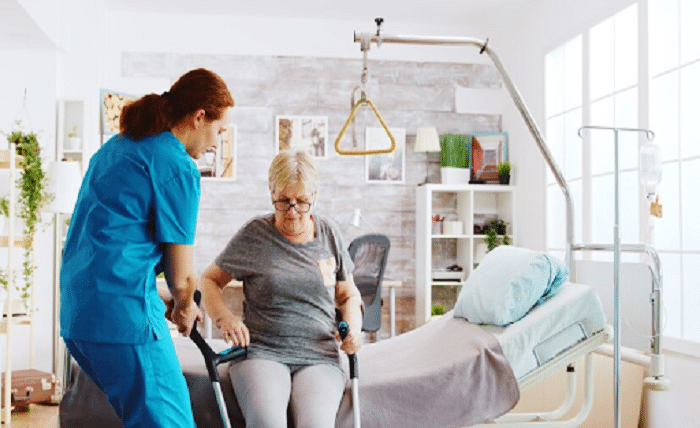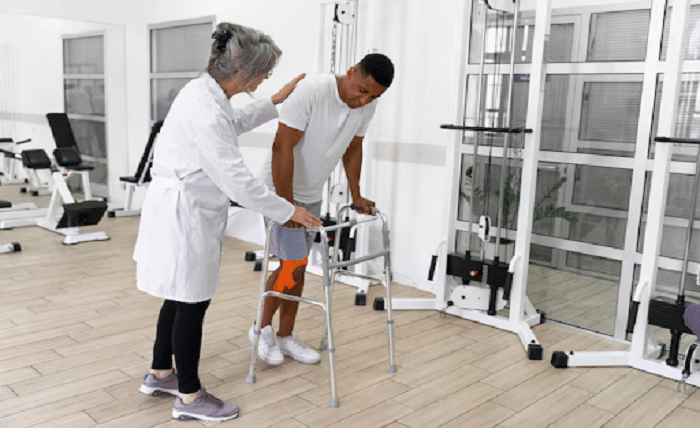How to Become a Moving and Handling Trainer: A Comprehensive Guide

As an experienced moving and handling trainer with over 15 years in the field, I’m often approached by individuals eager to enter this rewarding profession.
If you’re considering a career as a moving and handling trainer, you’ve chosen a path that’s not only fulfilling but also crucial in various industries.
In this comprehensive guide, I’ll walk you through the steps to become a proficient moving and handling trainer, sharing insights on education, qualifications, essential skills, job prospects, and how to launch your career successfully.
Table of contents
Understanding the Role of a Moving and Handling Trainer
Education and Qualifications
Essential Skills for Success
Gaining Experience
Finding Job Opportunities
How to Apply or Pitch Your Services
Opportunities and Future Outlook
Continuous Professional Development
Conclusion
Understanding the Role of a Moving and Handling Trainer
Before we dive into the ‘how’, let’s clarify what a moving and handling trainer does.
Essentially, these professionals teach others how to safely move people or objects in various settings, such as healthcare facilities, warehouses, or construction sites.
The primary goal is to prevent injuries and promote efficient work practices.
As a moving and handling trainer, you’ll be responsible for:
- Conducting risk assessments
- Designing and delivering training programs
- Demonstrating proper techniques for lifting, carrying, and moving
- Educating on the use of assistive equipment
- Ensuring compliance with health and safety regulations
- Keeping up-to-date with the latest industry standards and practices
Now that we’ve outlined the role, let’s explore how you can prepare yourself for this career.

Education and Qualifications
Foundational Education
While there’s no strict educational requirement to become a moving and handling trainer, a strong educational background can give you a significant advantage.
Consider the following paths:
1. High School Diploma or Equivalent: This is the minimum requirement for most entry-level positions.
2. Bachelor’s Degree: A degree in occupational health and safety, physical therapy, nursing, or a related field can provide valuable knowledge and increase your credibility.
3. Vocational Training: Some colleges and technical schools offer programs in occupational safety or healthcare that can be beneficial.
Specialized Certifications
To establish yourself as a moving and handling trainer, you’ll need to obtain specific certifications. These may vary depending on your location and the industry you’re targeting, but some common ones include:
1. Moving and Handling Trainer Certification: This is the core certification you’ll need. It’s offered by various organizations and just searching online for train the trainer moving and handling will show you the list of training providers.
2. First Aid Certification: Many employers require trainers to be certified in first aid and CPR.
3. Occupational Safety and Health Administration (OSHA) Certifications: In the US, OSHA offers various relevant certifications.
4. Industry-Specific Certifications: Depending on your focus, you might need additional certifications. For example, if you’re working in healthcare, you might need a Patient Handling certification.
Essential Skills for Success
Becoming a successful moving and handling trainer requires more than just certifications.
You’ll need to develop a range of skills:
1. Physical Fitness: You’ll be demonstrating techniques regularly, so maintaining good physical condition is crucial.
2. Communication Skills: You must be able to explain complex concepts clearly and engage with diverse audiences.
3. Patience and Empathy: Not everyone learns at the same pace. You’ll need to be patient and understanding with your trainees.
4. Attention to Detail: Proper technique is crucial in moving and handling. You must be able to spot and correct even minor errors.
5. Adaptability: Every workplace is different. You’ll need to adapt your training methods to various environments and audiences.
6. Problem-Solving Skills: You’ll often encounter unique challenges that require creative solutions.
7. Technology Proficiency: Familiarity with e-learning platforms, presentation software, and sometimes equipment simulation tools is increasingly important.
Gaining Experience
While certifications and skills are important, hands-on experience is invaluable in this field.
Here are some ways to gain experience:
1. Internships: Look for internship opportunities with occupational health departments, physical therapy clinics, or safety consulting firms.
2. Entry-Level Positions: Consider starting in roles such as a care assistant, warehouse worker, or safety officer to gain practical experience in moving and handling.
3. Shadowing: Reach out to experienced trainers and ask if you can shadow them during their sessions.
4. Volunteering: Offer your services to local community centers or non-profit organizations. This can provide practical experience and networking opportunities.
5. Practice Sessions: Conduct mock training sessions with friends or family to hone your skills.
Finding Job Opportunities
Once you’ve built your qualifications and gained some experience, it’s time to look for job opportunities. Here are some avenues to explore:
1. Healthcare Facilities: Hospitals, nursing homes, and rehabilitation centers often need moving and handling trainers.
2. Manufacturing and Warehousing: These industries require trainers to teach safe lifting and equipment handling techniques.
3. Construction Companies: The construction sector needs trainers to educate workers on safe material handling.
4. Safety Consulting Firms: Many companies outsource their safety training to specialized consulting firms.
5. Government Agencies: Occupational safety departments at local, state, or federal levels may hire trainers.
6. Educational Institutions: Vocational schools and colleges sometimes require moving and handling trainers for their healthcare or occupational safety programs.
7. Self-Employment: Many experienced trainers eventually start their own consulting businesses.

How to Apply or Pitch Your Services
Whether you’re applying for a position or pitching your services as a freelance trainer, here are some tips to stand out:
1. Tailor Your Resume: Highlight your relevant certifications, experience, and skills. Use keywords from the job description or industry standards.
2. Create a Portfolio: Develop a portfolio showcasing your training materials, testimonials, and any metrics demonstrating the impact of your training (e.g., reduction in workplace injuries).
3. Prepare a Demo: Be ready to demonstrate your training style. Some employers may ask for a mini-training session as part of the interview process.
4. Emphasize Problem-Solving: Share specific examples of how you’ve addressed moving and handling challenges in the past.
5. Stay Current: Highlight your commitment to staying updated with the latest industry standards and practices.
6. Network: Attend industry events, join professional associations, and engage with other professionals on LinkedIn.
7. Develop a Strong Online Presence: Consider creating a professional website or blog where you share your expertise.
Opportunities and Future Outlook
The field of moving and handling training offers numerous opportunities for growth and specialization. Some areas to consider include:
1. Industry Specialization: You could focus on healthcare, manufacturing, construction, or other specific sectors.
2. Ergonomics Consulting: Expand your expertise to include workplace ergonomics assessments and consultations.
3. Product Training: Some manufacturers of lifting equipment or assistive devices hire trainers to educate customers on proper use.
4. Online Training Development: With the growth of e-learning, there’s increasing demand for trainers who can develop effective online moving and handling courses.
5. International Opportunities: Safety standards are becoming more globalized, creating opportunities for trainers willing to work internationally.
Continuous Professional Development
Becoming a moving and handling trainer is not the end of the journey; it’s the beginning.
To stay relevant and effective, you must commit to continuous learning and development.
Here are some ways to do this:
1. Attend Workshops and Conferences: These events keep you updated on the latest research and best practices.
2. Join Professional Associations: Organizations like the National Back Exchange or the American Society of Safety Professionals offer resources and networking opportunities.
3. Pursue Advanced Certifications: Consider obtaining advanced or specialized certifications as you progress in your career.
4. Read Industry Publications: Stay informed about new regulations, equipment, and techniques through journals and trade magazines.
5. Engage in Peer Learning: Participate in trainer forums or mentorship programs to learn from and share with your peers.
Conclusion
Becoming a moving and handling trainer is a journey that requires dedication, continuous learning, and a genuine passion for promoting safety and well-being in the workplace.
While the path may seem challenging, the rewards are significant.
You’ll have the satisfaction of knowing that your work directly contributes to preventing injuries and improving people’s quality of life.
Remember, every expert was once a beginner. With the right education, certifications, skills, and attitude, you can build a successful and fulfilling career in this essential field.
Stay curious, remain adaptable, and always prioritize the safety and well-being of those you train. Your journey to becoming a moving and handling trainer starts now – embrace it with enthusiasm and commitment. You can also compare with evacuation chair training for more opportunities in the health and social space.




